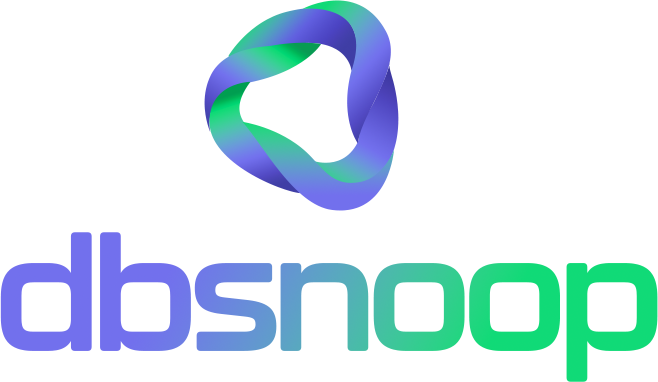

Your monthly cloud provider bill arrives, and the amount attributed to the managed database service (AWS RDS, Azure SQL, Google Cloud SQL) is, once again, frighteningly high. The standard justification is that this is simply “the cost of doing business,” an inevitable consequence of growing traffic and data volume.
This justification, however, is fundamentally incorrect. In the vast majority of cases, the high cost does not reflect the legitimate use of resources but rather the payment of a heavy tax on inefficiency. Companies are not paying for what they use; they are paying for the oversized hardware that is necessary to support the waste generated by an unoptimized workload.
The root of the problem is not in the price of the instance or the storage, but in the absence of a clear connection between what the software asks for (the queries) and what the infrastructure needs to deliver. This article technically details the three main factors that inflate your cloud database bill and how workload observability is the only tool capable of cutting these costs at their source.
The Hidden Cost of the Cloud: Paying for Waste, Not for Use
The promise of the cloud is the “pay-as-you-go” model, an exchange of capital expenditures (CapEx) for operational expenditures (OpEx). What is often forgotten is that if your “go” is inefficient, your “pay” will be exponentially higher. The cost of a database in the cloud is, in essence, the price of three main components:
- Compute (vCPU and RAM): The size and family of the instance (e.g., AWS db.m5.2xlarge).
- Storage (Disk): The amount of GB provisioned and, crucially, the performance (IOPS – Input/Output Operations Per Second).
- Data Transfer: The network traffic generated by the database.
Each of these components is directly impacted by the workload’s efficiency. Inefficient software requires more CPU, more IOPS, and transfers more unnecessary data, inflating all three pillars of your cost.
Factor 1: The Unoptimized Workload (The Root Cause)
This is the epicenter of the problem. A database workload is the sum of all the queries, transactions, and operations it executes. When this workload is inefficient, it forces the infrastructure to work much harder than necessary to perform the same business task.
Brute-Force Queries: The Full Table Scan
The most common cause of excessive resource consumption is the Full Table Scan. This occurs when a query, in order to find a small subset of data, is forced to read an entire table because there is no suitable index to serve it.
Impact on Cost:
- IOPS: Reading a 50GB table from the disk to find 10KB of data is a massive waste of IOPS. This forces the purchase of more expensive storage tiers (like AWS io2) just to support this inefficiency. With an index, the same operation could be satisfied by reading just a few data blocks, reducing the I/O demand by over 99%.
- CPU: Processing millions of unnecessary rows consumes CPU cycles. The query that should take milliseconds ends up taking seconds or minutes, keeping the CPU at high utilization.
The Multiplier Effect: High-Frequency Fast Queries
As previously discussed, the most dangerous bottleneck is often not the slowest query, but the most frequent one. A 20ms query called 10,000 times per minute creates a much larger load on the system than a 5-second query called 10 times per minute.
Impact on Cost:
- CPU: This cumulative and constant load is what defines the baseline CPU utilization. It is this load that forces the choice of an instance with 8, 16, or 32 vCPUs. A micro-optimization in this query, reducing its latency by just 5ms, can free up an entire vCPU, allowing for a downsizing of the instance and generating recurring savings.
Inefficient Joins and Cartesian Products
Queries that join multiple tables without the correct JOIN conditions or without the proper indexes on foreign keys can result in “Cartesian products,” where the number of rows to be processed grows exponentially.
Impact on Cost:
- Memory (RAM): The database needs large amounts of memory to perform sort and hash operations on these massive datasets, forcing the choice of instances with more RAM.
- CPU: The computational effort to process a join of billions of rows is astronomical and can paralyze the server.
An observability platform like dbsnOOp attacks this factor at its root. By analyzing 100% of the workload, it precisely identifies which queries are causing Full Table Scans, which have the highest cumulative cost (latency * frequency), and which are executing inefficient execution plans. It not only points out the problem but also recommends the solution, such as the exact CREATE INDEX to transform an expensive scan into an efficient seek.

Factor 2: Chronic Database Oversizing (The Visible Symptom)
Oversizing (or overprovisioning) is the direct consequence of an unoptimized workload. It is the practice of allocating more hardware resources than necessary as an insurance policy against software inefficiency.
The Reactive Scaling Cycle
The story is always the same:
- The application becomes slow or a CPUUtilization alert at 95% is triggered.
- The SRE team, without the time or tools for a deep diagnosis, resorts to the quickest solution: scaling the instance vertically. A large becomes an xlarge, an xlarge becomes a 2xlarge.
- The performance problem is temporarily relieved. The cloud bill permanently increases.
- The inefficient workload continues to grow with the data volume, and in a few months, the cycle repeats.
This cycle treats the symptom, not the disease. The high CPU utilization was not a sign that the machine was too small, but that the work it was doing was unnecessarily difficult.
The “Safety Buffer”: Paying for Fear
Even in stable systems, teams often provision instances that are 30-50% larger than the average utilization, creating a “safety buffer.” This buffer exists because the team lacks visibility or confidence in the workload’s behavior. They don’t know if a code change or a traffic spike will expose a hidden performance bottleneck, so they pay extra for idle capacity “just in case.”
Oversizing is a tax on the unknown. dbsnOOp eliminates this unknown. By optimizing the workload first (Factor 1), resource utilization drops drastically. The CPU that was operating at 85% now operates at 20%. With this new reality, the team can perform an aggressive and data-driven rightsizing, eliminating the safety buffer and paying only for the resources that the efficient workload actually needs.
Factor 3: The Lack of Visibility (The Blind Spot)
The root of both of the above factors is a lack of visibility. Native cloud monitoring tools, like Amazon CloudWatch or Azure Monitor, are excellent for monitoring the infrastructure, but they are fundamentally blind to what happens inside the database.
The Correlation Gap
These tools show the what, but not the why.
- They show an IOPS spike, but not the query that caused it.
- They show the CPU at 100%, but not the execution plan that is consuming the cycles.
- They show the memory running out, but not the inefficient join that is requiring the massive sort.
This “correlation gap” is where the costs hide. Without being able to connect the symptom (high resource usage) to its root cause (a specific query), teams are stuck in the reactive cycle of scaling.
The Organizational Blame Game
The lack of a single source of truth also creates organizational friction. The FinOps team points to the high cost. The Infra/SRE team points to the high utilization. The Development team says the code hasn’t changed. Without data that connects the code to the utilization and the cost, the discussion becomes an unproductive blame game.
dbsnOOp fills exactly this gap. It is the bridge that connects the infrastructure metrics from CloudWatch directly to the workload’s behavior. On a single dashboard, an engineer can see the CPUUtilization line rise and, perfectly aligned in time, see the exact query that started running at that moment, its execution plan, and its impact. This visibility eliminates the guessing game, breaks down organizational silos, and allows for a productive, fact-based conversation about how to reduce costs.
The 3-Step Strategy to Regain Control of Cloud Database Costs
Reducing the cost of your cloud database is not a FinOps project; it is an engineering project. The strategy is simple and methodical:
- Step 1: Diagnose the Workload. Use an observability tool like dbsnOOp to get a clear baseline of your workload. Ignore the CPU metrics for a moment and focus on “DB Time.” Identify your 10 most expensive queries in terms of total cost. Analyze their execution plans to find the inefficiencies (Table Scans, etc.).
- Step 2: Optimize the Software. With the diagnosis in hand, execute the highest-impact optimizations. Apply the recommended indexes. Rewrite the most problematic queries. The goal is to drastically reduce the computational effort required to perform the same business work.
- Step 3: Resize the Infrastructure. After optimization, monitor the new baseline of resource utilization. With CPU and I/O now much lower, perform a confident and aggressive rightsizing. Reduce the instance size, decrease the provisioned IOPS, and realize the cost savings that previously seemed impossible.
Cost is a Reflection of Efficiency
The high cost of your cloud database is not a foregone conclusion. It is a symptom. It is a direct reflection of the efficiency, or inefficiency, of your software. By stopping to treat the problem with more hardware and starting to solve it with intelligent software engineering, you transform the cost from a reactive and uncontrollable expense into an optimizable variable. Deep workload visibility is the key that unlocks this optimization, allowing you to stop paying for waste and start paying only for what your business truly needs.
Want to find out how much of your cloud bill is actually a tax on inefficiency? Schedule a meeting with our specialist or watch a live demo!
To schedule a conversation with one of our specialists, visit our website. If you prefer to see the tool in action, watch a free demo. Stay up to date with our tips and news by following our YouTube channel and our LinkedIn page.
Schedule a demo here.
Learn more about dbsnOOp!
Learn about database monitoring with advanced tools here.
Visit our YouTube channel to learn about the platform and watch tutorials.

Recommended Reading
- The report that has already saved millions for companies like yours: This article technically details how workload diagnosis translates into a massive ROI, connecting query optimization to the direct reduction of cloud costs, the decrease in engineering time spent on troubleshooting, and the recovery of revenue lost to latency.
- Why relying only on monitoring is risky without a technical assessment: Explore the critical difference between passive monitoring, which only observes symptoms, and a deep technical assessment, which investigates the root cause of problems. The text addresses the risks of operating with a false sense of security based solely on monitoring dashboards.
- Your database might be sick (and you haven’t even noticed): Discover the signs of chronic and silent problems that don’t trigger obvious alerts but that degrade performance and stability over time. The article focuses on the need for diagnostics that go beyond superficial metrics to find the true health of your data environment.

